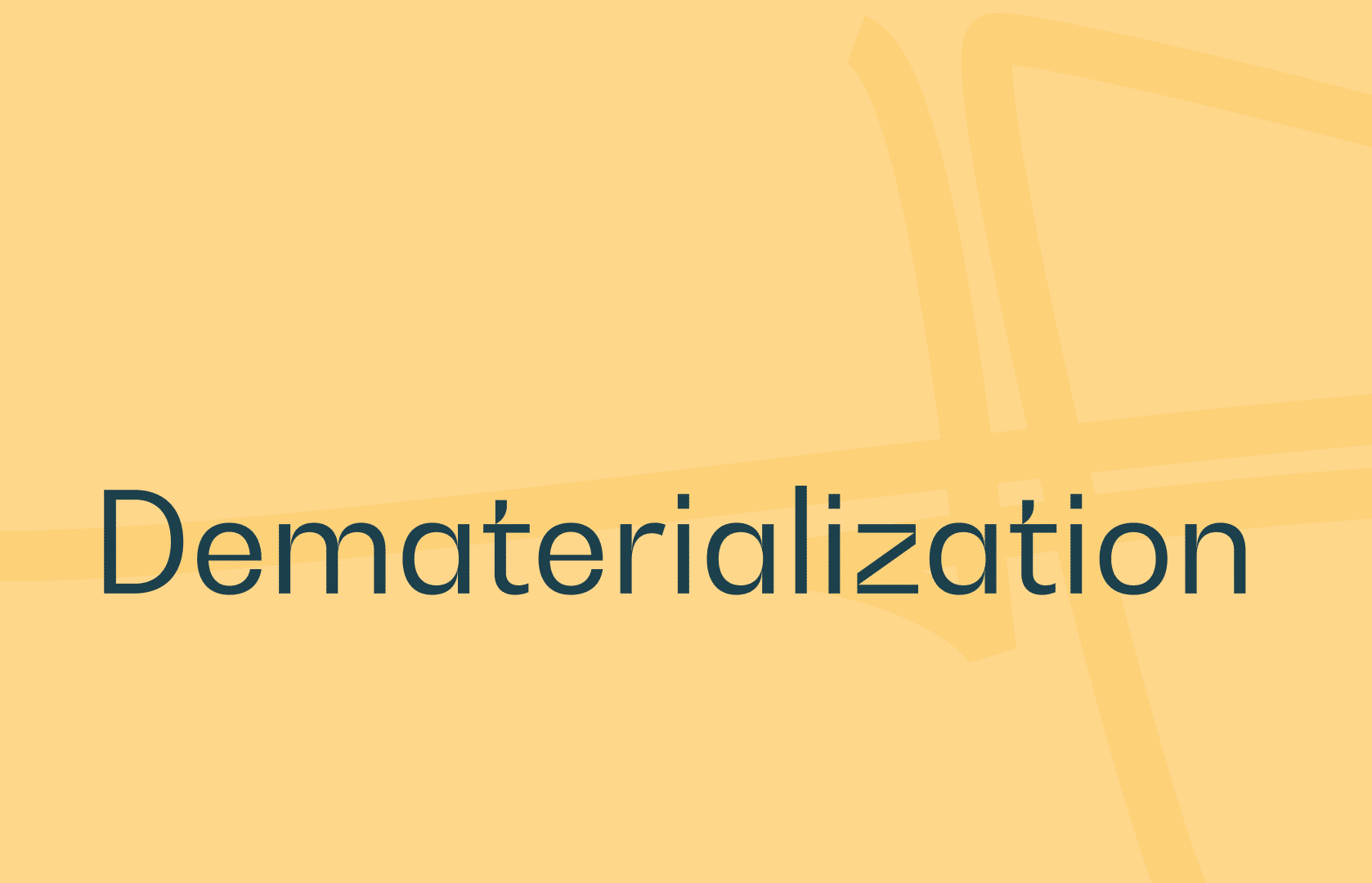Dematerialization is the replacement in a company or organization of its physical information media by computer files and computers. Dematerializing a document means producing it directly in digital format from an information system. Dematerialization implies an in-depth reorganization of the process for handling a flow of documents. These documents can be tasks, tools or procedures.
Since the 2000s, dematerialization has become the norm. For a long time, paper was the only information system available to companies. Today, it has finally been replaced by electronic documents.
Dematerialization concerns both public administrations and private companies. All departments of a company can be involved: human resources, IT, purchasing, legal, etc.
How does dematerialization work?
To go paperless, you first need to digitize any documents that still exist in paper format. To do this, you need either a scanner or optical character recognition software. This eliminates the need to enter all documents manually.
Dematerializing a document means producing it directly in digital format from an information system. The dematerialization of invoices, for example, has become mandatory. As of January 1, 2020, companies are required to send their invoices to the public sector in electronic format. The French Finance Act for 2020 introduced the obligation of electronic invoicing. Exchanges between VAT-registered companies established in France are covered by this law.
Dematerialization must be accompanied by a document management tool. Electronic Document Management (EDM). This software facilitates the management of document flows within a company. It enables the smooth exchange of information. It lets you manage, store and even modify documents.
Electronic document management must therefore be accompanied by an Electronic Document Archiving System (EDAS). For documents requiring a signature, the electronic signature is the solution. Electronic signatures enable you to invite people to sign documents securely online. Signed documents then have real legal value.
To achieve this, we strongly recommend the use of electronic means such as software and/or hardware. In particular, it is possible to use a third-party archiver to carry out all the operations associated with these documents, i.e. :
- acquisition
- digitization
- validation
- archiving
- filing
Why dematerialize your documents?
Dematerialization saves time, human resources and money. All document flows are concerned by dematerialization. Information is accessible online and shared by all authorized players, according to the rights they have been granted. Collaborative working and mobility are widely favored, saving time and increasing fluidity, while improving efficiency and security. The storage and reliability of processing operations leads to productivity gains for companies.
- THE ADVANTAGES
Dematerializing a company’s documents and data on the web can significantly reduce its ecological footprint. Less paper means less ink consumption, and therefore better environmental protection.
In addition to the space and ecological footprint that paper storage can have, this solution also generates a number of costs. First of all, there are the costs associated with printing, including the purchase of ink, sheets and printer maintenance. Archives also require a great deal of organization. This work can be entrusted to a member of the company, which generates additional costs.
Filing and storing documents takes a lot of time. Dematerialization saves a considerable amount of time. It also makes it easier to find what you’re looking for.
Choosing to dematerialize documents saves a considerable amount of space.
- THE DISADVANTAGES
If your documents are stored on external servers or in the cloud, you’ll need help to manage them. However, it is possible to get assistance, particularly from EDM (electronic document management) software. There are a number of software packages, such as Edusign, that will enable you to manage access and rights to these documents, as well as securing them.
Dematerialization requires a fairly substantial investment. Indeed, to limit the risk of finding yourself with storage problems later on, you’ll need to acquire high-performance, scalable hardware.
Business dematerialization is a process that affects a wide range of departments and fields. Whether to simplify company organization or to counter the complexity of certain administrative processes, dematerialization is becoming essential for businesses.




